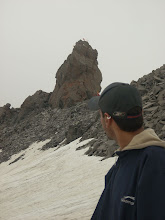
The Himalayas have remained an inspiration for spiritual pursuits down the ages and many sages have come seeking refuge in its secluded and serene valleys. This vast mountain chain is also the source of many rare herbs that have medicinal properties and have been used to heal many an ailing soul.
Himachal Pradesh, sheltered in the Himalayas has a rich bio-resource of medicinal plants and a rich stream of Ayurveda, a system of treatment indigenous to the Indian sub-continent, has been developed in the state. Some of the rarest medicinal plants with unique curative and preventive properties only grow in the rarefied altitudes of the Himalayan landscapes and are procured with great difficulty.
Ayurveda takes an holistic approach to life in which the objective is to achieve balance of the mind, body and spirit for internal and external harmony. When translated ‘Ayurveda’ literally means ‘Science of Life’.
Ayurveda as a system of treatment approaches life as a union of body (Sharir), sense organs (Indriya), Psyche (Mana) and Soul (Atma). It holds that disease erupts only when the equilibrium between three biological forces namely Vata, Pitta and Kapha breaks down. The treatment achieves results only when the balance in this ‘tridosha’ is established.
Of the varied ways of Ayurvedic treatment, Panchkarma therapy is unique and has become very popular. Panchkarma consists of five methods of treatment namely, Vamana, Virechana, Anuvasana Vasti, Niruhana Vasti and Nasya Karma. Panchkarma is a type of Shodhan Chikitsa where unlike Shaman Chikitsa, toxins are expelled out of the body and all the microcirculatory channels of the body get purified. This is a therapy based on three channels Purva Karmas, Pradhana Karmas and then Paschaat Karmas. Purva Karmas are the body preparatory procedures done before the actual process.
However, all five procedures are not always utilized. The treatment modality is based on the needs and circumstances of the individual,, so has Panchkarma always been an individual process. Therapies are chosen based on person’s innate constitution, strengths and weakness, imbalances, emotional state and even the season of the year. The digestive capacity of the individual is also considered. The Panchkarmas are intense treatments, done under the supervision of a qualified practitioner and require proper preparation.

